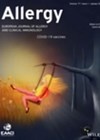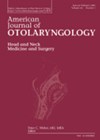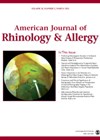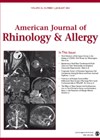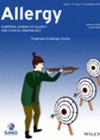
Journal Reviews
Eosinophilic or not eosinophilic: dupilumab seems to work
Chronic rhinosinusitis with nasal polyps (CRSwNP) is a type 2 inflammation with interleukin (IL)-4, IL-13, and IL-5. Tissue eosinophilia in nasal polyps dramatically increased over a 10-20-year period. Classification of the severity of eosinophil status is expected to lead to...
A new era in the treatment of recalcitrant nasal polyps?
Chronic rhinosinusitis with nasal polyps (CRSwNP) can be difficult to treat effectively in patients with aggressive or recalcitrant disease. Omalizumab (Xolair) is a monoclonal anti-IgE antibody with proven benefits for patients with moderate/severe asthma and CRSwNP, but this study looks...
Can we predict how much benefit patients will get from ESS with a novel monoclonal antibody
Mepolizumab (Nucala) is a humanised IgG1 monoclonal antibody that acts as an IL-5 antagonist. It has been shown to be highly effective in treating severe asthma. It is hypothesised that it will be effective for patients with recalcitrant CRSwNP. This...
Simple preoperative tests predicting outcomes for ESS patients?
We are all familiar with patients suffering extensive nasal polyps who relapse all to soon after careful and thorough endoscopic sinus surgery (ESS). This paper looks to answer whether we can predict which patients will do well, and which less...
Allergic rhinitis, the usual suspects
Allergic rhinitis (AR) is characterised by allergen binding to IgE on mast cells and basophils and subsequent histamine, prostaglandine D2 (PGD2) and cysteinyl leukotrienes (cysLTs) release causing early-phase response. This is followed by late-phase response mediated by eosinophils. Other cells,...

